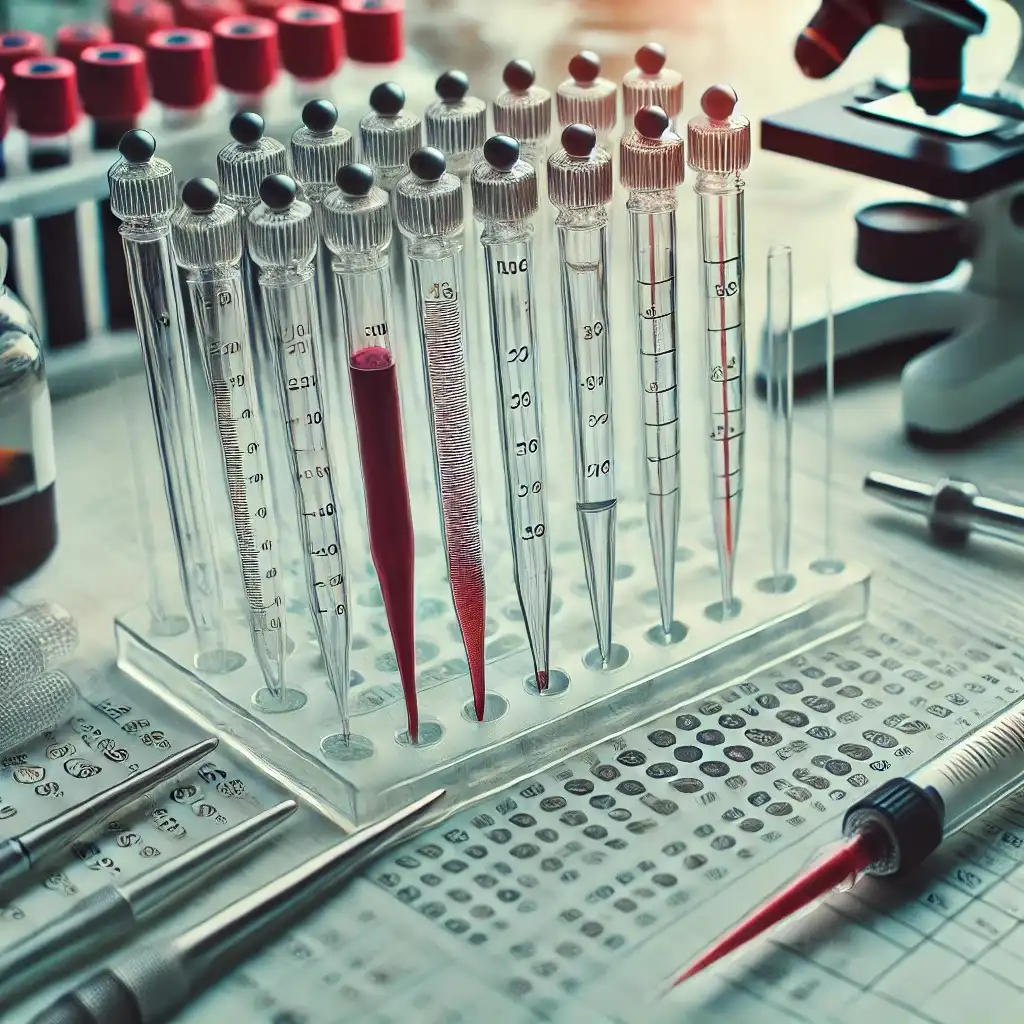
In laboratory settings, precision and accuracy are paramount, especially when working with blood samples. One of the essential tools used in hematology for blood analysis is the RBC pipette (Red Blood Cell Pipette). This tool plays a crucial role in counting and analyzing red blood cells (RBCs), which is important for diagnosing various medical conditions like anemia, polycythemia, and other blood disorders.
Let’s dive deeper into the features, uses, and importance of RBC pipettes in laboratory practices.
What is an RBC Pipette?
An RBC pipette is a specialized tool for counting red blood cells in a blood sample. It is usually made of glass or plastic and features a narrow bore for accurate measurement. The pipette is graduated and calibrated to measure 0.5 microliters of blood. This precise measurement is crucial for accurate RBC counts when mixed with a diluent solution.
RBC pipettes are part of a larger category of pipettes used for clinical and diagnostic purposes.
They are commonly used in blood tests like the red blood cell count (RBC count), hemoglobin level, and hematocrit measurements.
Design and Functionality
RBC pipettes usually have the following characteristics:
- Graduations and Calibration: These pipettes are calibrated for the accurate transfer of blood. The graduations help in measuring specific volumes of blood and diluent, making them suitable for accurate RBC counting.
- Wide Bulb: The RBC pipette has a bulb in the main body that holds the sample. This is essential for mixing the blood with the diluent before counting.
- Narrow Bore: The pipette’s narrow tip ensures a consistent blood flow, allowing for precise handling of the sample.
- Color-coded: Many RBC pipettes are color-coded for easy identification and differentiation from other types of pipettes used for different tests (such as WBC pipettes). How to Use an RBC Pipette:-
Using an RBC pipette requires precision and technique to ensure accurate results. Here’s a step-by-step guide:
- Prepare the Diluent: First, a diluent solution (usually a saline or specific RBC diluent) is prepared. The purpose of the diluent is to dilute the blood to make the red blood cells easier to count.
Fill the Pipette: Use vacuum or suction to draw the blood sample into the pipette, reaching the required graduation mark. Mix the sample with the diluent in the proper proportion, usually a 1:200 ratio for red blood cell counting. - Mix the Sample: After filling the pipette with blood and diluent, gently mix the sample to ensure even distribution of the cells.
- Load the Counting Chamber: The mixed sample is then loaded into a hemocytometer or a specialized counting chamber for manual counting, or it can be used in an automated analyzer.
- Count the RBCs: The blood sample is observed under a microscope or through a machine, and the number of red blood cells is calculated based on the number of cells observed in the defined grid of the counting chamber. Importance of RBC Pipettes
The use of RBC pipettes is integral in several areas of healthcare and diagnostics:
- Accurate Blood Cell Counting: RBC pipettes allow for the precise counting of red blood cells, which is essential for diagnosing blood disorders. An accurate count is critical in determining the severity of conditions like anemia, dehydration, or excessive RBC production.
- Monitoring Treatment Progress: For patients undergoing treatment for anemia or polycythemia, regular RBC counts are necessary to track treatment progress and adjust therapy as needed.
- Blood Transfusion Planning: Accurate RBC counts are also important when planning blood transfusions. By knowing the RBC count, healthcare professionals can determine the right volume of blood needed for transfusions.
- Research and Development: RBC pipettes are used in research labs to study blood cell behavior, the effects of drugs on red blood cells, and other hematological studies. Types of RBC Pipettes
RBC pipettes come in different types depending on the specific requirements of the test. The two most common types include:
- Standard RBC Pipettes: These are used in manual blood counting and are often made from glass. They are calibrated for measuring small volumes of blood mixed with a diluent.
- Disposable RBC Pipettes: These are single-use pipettes made from plastic, which eliminates the need for cleaning and sterilizing between uses. They are increasingly popular in clinical settings due to their convenience and hygiene benefits. Conclusion
The RBC pipette is a simple yet indispensable tool in medical laboratories, playing a vital role in the accurate analysis of red blood cells. Whether it’s for diagnosing a condition, monitoring treatment progress, or conducting research, this pipette ensures that medical professionals can count red blood cells with precision, leading to better diagnoses and treatment outcomes. Whether you’re a seasoned lab technician or just starting out, understanding how to properly use and maintain an RBC pipette is fundamental to your role in healthcare.
Investing in high-quality RBC pipettes and mastering their use ensures that blood tests are conducted with the accuracy and reliability required for optimal patient care.
Conclusion:
“At LabCare Enterprises, we provide high-quality RBC pipettes and other laboratory tools to ensure accurate and reliable results in blood testing. Trust us for all your laboratory consumables needs.”
Disclaimer:
The content of this blog is intended for informational purposes only and should not be considered as medical or professional advice.
While we aim to provide accurate and reliable information, we recommend consulting a healthcare professional or laboratory expert for any specific questions regarding the use of RBC pipettes and related procedures. LabCare Enterprises is not liable for any actions taken based on the information shared in this blog.
Note:“Image created by DALL·E”




